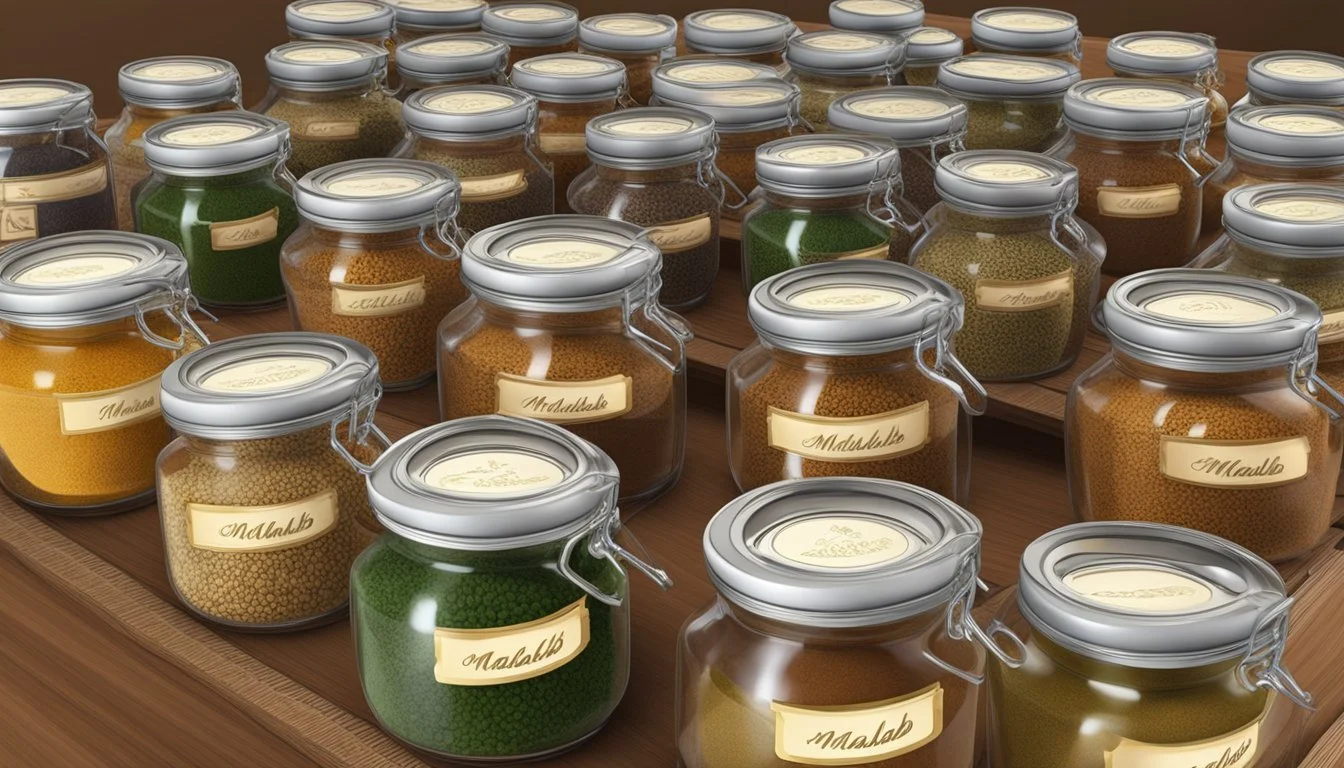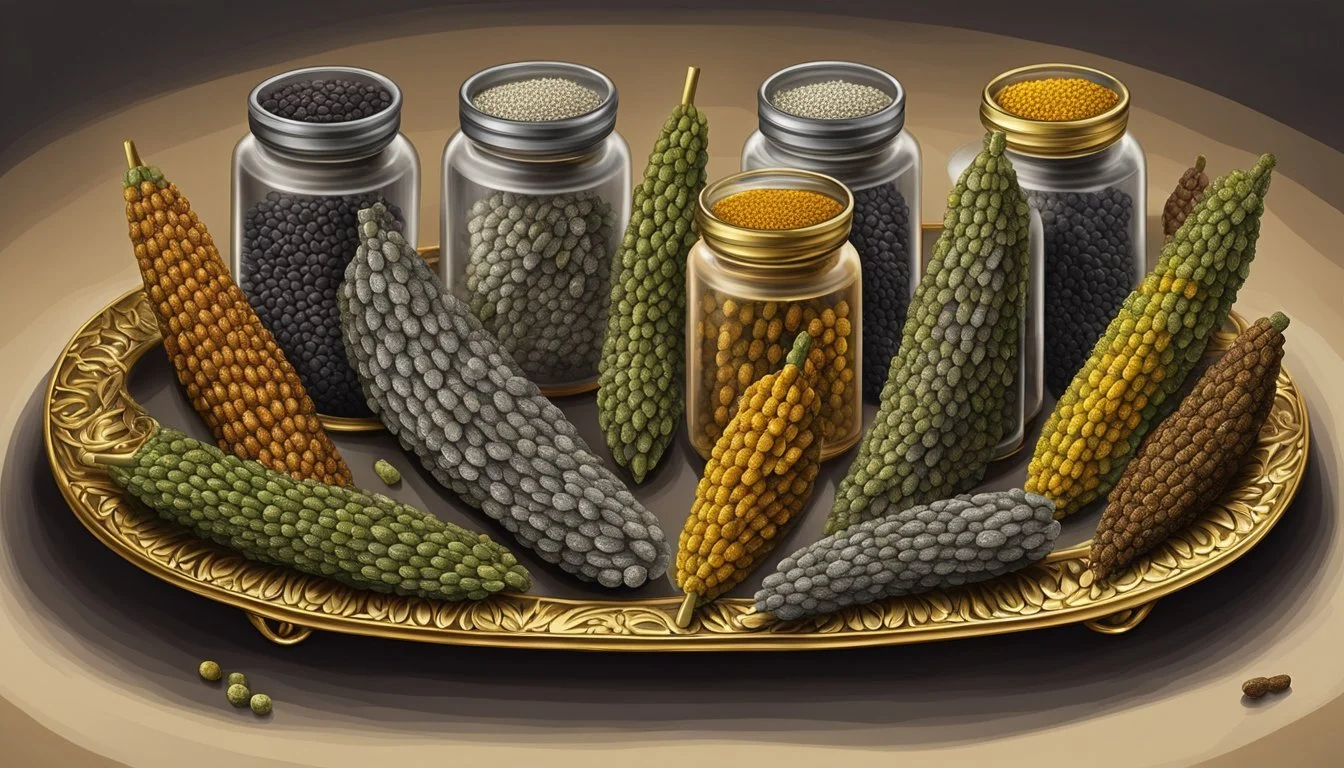10 Most Expensive Spices
Luxurious Flavors Around the World
The world of spices offers an extraordinary array of flavors and aromas that enhance culinary experiences. Among these, some spices stand out not just for their unique tastes but also for their high prices. Certain spices command premium prices due to their rarity, labor-intensive harvesting processes, or exceptional quality.
Understanding the value of these spices can provide valuable insights into culinary practices and global trade. This article delves into the 10 most expensive spices, offering a closer look at what makes them so special and why they fetch such high prices on the market. This examination brings to light the fascinating interplay between agriculture, history, and cuisine.
1) Saffron
Saffron is known as the most expensive spice by weight. This vibrant and aromatic seasoning comes from the stigma of the autumn crocus flower, scientifically named Crocus sativus.
The harvesting process for saffron is labor-intensive. Each flower produces only three red stigmas. These must be handpicked and dried, making it a time-consuming endeavor.
Historically, saffron has been used for both culinary and medicinal purposes. Its unique flavor and vivid color make it a prized ingredient in various cuisines, including Persian, Indian, and Mediterranean dishes.
Saffron's cultivation is concentrated in regions such as Iran, Spain, and Kashmir. The complex process, limited growing areas, and high demand contribute to its steep price, which can reach over $2,300 per pound.
In addition to its culinary uses, saffron has held cultural and religious significance throughout history. Ancient frescoes, like those at the Palace of Knossos, show the long-standing value of this spice.
Today, saffron continues to be a symbol of luxury and quality in cooking and beyond.
2) Vanilla Bean
Vanilla bean is among the most expensive spices in the world. It costs around $566 per pound, making it a luxury item in the culinary world.
The high price of vanilla beans is attributed to the labor-intensive process required for their cultivation and harvesting. Each vanilla orchid must be hand-pollinated, and the beans need months to cure.
Vanilla beans originate from tropical regions, primarily Madagascar, which produces the majority of the world's supply. The island's specific climate and soil conditions contribute to the unique flavor profile of its vanilla.
Despite its high cost, vanilla bean is valued for its rich, complex flavor. It is widely used in baking, desserts, and even savory dishes, providing a depth of flavor that synthetic vanilla cannot replicate.
The demand for natural vanilla has surged in recent years, leading to market volatility. This has caused prices to fluctuate and sometimes spike, making vanilla beans even more of a precious commodity.
3) Cardamom
Cardamom ranks as the third most expensive spice globally, closely following saffron and vanilla. This spice is known for its strong, distinctive aroma and flavor, often described as a combination of sweet, spicy, and floral notes.
Green cardamom, specifically, is prized in both culinary and medicinal applications. It is native to South Asia and is extensively used in Indian, Middle Eastern, and Scandinavian cuisines. The spice is often utilized in both sweet and savory dishes.
Harvesting cardamom is a labor-intensive process. The pods must be picked by hand just before they fully ripen to ensure the best quality and flavor. This meticulous harvesting process significantly contributes to its high cost.
A kilogram of green cardamom can reach prices up to $90, making it a luxury item in many parts of the world. Besides the pods, ground cardamom is also available, though it tends to lose its potency quicker than whole pods.
Due to its price and unique flavor, cardamom is often used sparingly. In addition to culinary uses, it is also valued in traditional medicine for its believed digestive and aromatic properties.
4) Clove
Clove, derived from the flower buds of the Syzygium aromaticum tree, is a spice noted for its warm, sweet, and slightly peppery flavor. This spice has been a staple in both culinary and medicinal practices for centuries. Cloves are especially popular in spice blends like pumpkin spice and garam masala.
The process of cultivating cloves is labor-intensive. The flower buds must be harvested by hand at a precise length before they open. This meticulous attention to detail contributes to the high cost of cloves, which can reach up to $133 per pound.
Weather conditions significantly impact clove yield. The Syzygium aromaticum tree produces only 2 to 3 kilograms of cloves annually. Any fluctuation in climate can affect this yield, making the spice even rarer and more valuable.
Historically, cloves were highly prized and even sparked trade wars. Today, they are primarily grown in countries like Indonesia, Madagascar, and Tanzania. Their rich aroma and distinct taste make them a key ingredient in various dishes and beverages around the world.
Cloves also possess potential health benefits, such as antimicrobial properties and digestive aid. These qualities add to their appeal and demand, further driving up their price in global markets.
5) Cinnamon
Cinnamon ranks as one of the most expensive spices in the world. It is derived from the inner bark of trees from the genus Cinnamomum. There are two main types: Ceylon and Cassia. Ceylon, often referred to as "true cinnamon," is more costly due to its delicate flavor and scarcity.
The spice plays a significant role in both sweet and savory dishes across various cuisines. It is highly prized for its warm, sweet, and slightly spicy flavor. Its essential oils, primarily cinnamaldehyde, are responsible for this distinct taste profile.
In the global market, the price of cinnamon can vary significantly. Ceylon cinnamon commands a higher price, sometimes several times that of Cassia. The labor-intensive process of harvesting and preparing the spice contributes to its high cost.
Cinnamon has been traded for centuries and was once more valuable than gold. It remains a symbol of luxury in the culinary world. Its uses extend beyond cooking, finding a place in traditional medicine, perfumes, and aromatherapy.
The main producers of cinnamon are Sri Lanka, Indonesia, China, and Vietnam. These regions offer ideal growing conditions, contributing to the spice's premium status.
6) Black Cumin Seed
Black cumin seed, scientifically known as Nigella sativa, is highly valued for its unique flavor and various culinary uses. This spice is distinct from regular cumin, known for its darker color, smaller size, and a slightly sweeter, citrusy taste.
Widely used in South Asian and Middle Eastern cuisine, black cumin is an essential ingredient in many traditional dishes. Its flavor profile enhances the taste of roasted meats and vegetable dishes.
The price of black cumin seed can vary significantly. It typically ranges from $30 to $50 per pound, but can sometimes exceed this range depending on quality and origin. Its cost reflects the spice's rarity and the labor-intensive process required to harvest it.
In addition to its culinary uses, black cumin seed has historical significance and has been used for its medicinal properties for centuries. This makes it not only a valuable spice for cooking but also an important cultural ingredient.
Black cumin's distinct flavor and aroma make it a preferred choice for chefs and home cooks looking to add a unique twist to their recipes. Its versatility in both sweet and savory dishes adds to its appeal in global cuisines.
7) Mahlab
Mahlab is a spice made from the seed kernel of St. Lucie cherries. The process to extract the kernel is painstaking and contributes to its high cost. Mahlab is noted for its distinct taste, merging the bitterness of almonds with the sweet notes of cherries.
The kernels are typically tan or beige and measure about 5 to 7 mm in size. They can be used whole or ground. Mahlab's aroma is reminiscent of roses, making it an exquisite addition to various dishes.
This spice is particularly popular in Middle Eastern and Mediterranean cuisines. It is often used in baked goods, adding a subtle yet unique flavor profile to pastries and breads. Mahlab can also be found in sweet and savory recipes, from cakes to cheeses.
8) Long Pepper
Long pepper, also known as Pippali, comes from a flowering plant. Visually, it resembles a small, slim pinecone. This spice has been valued for centuries for its unique flavor profile.
Its taste is similar to black pepper but with a sweeter, more complex undertone. It offers a mix of spiciness and earthy richness.
In culinary applications, long pepper can be used in various dishes, including stews, soups, and marinades. It's popular in Indian and Southeast Asian cuisine.
Apart from its culinary uses, long pepper has been employed in traditional medicine. It's believed to have digestive and respiratory benefits, although more research is needed.
The price of long pepper varies, but it's generally higher than common black pepper due to its distinct flavor and limited availability.
9) Grains of Paradise
Grains of Paradise, also known as alligator pepper, Roman pepper, or Guinea grains, are among the world's most expensive spices. This spice is derived from the seeds of the Aframomum melegueta plant, native to West Africa.
Grains of Paradise are often compared to black pepper with an added layer of complexity. They have a bright, citrusy flavor with undertones of cardamom and ginger. The spice provides a warm, peppery heat that enhances both sweet and savory dishes.
These seeds are used in a variety of culinary applications, including soups, stews, and rice dishes. They are also popular in brewing and distilling, adding unique flavors to craft beers and gins. Additionally, Grains of Paradise are noted for their use in traditional African cuisine and medicine.
10) Brown Mustard Seed
Brown mustard seeds are one of the more expensive spices available on the market today. Originating from the Brassica juncea plant, these seeds are valued for their robust, spicy flavor. They are a staple in many Indian, Asian, and European cuisines, bringing an intense burst of heat to dishes.
In culinary uses, brown mustard seeds are often toasted or fried to enhance their flavor before being added to recipes. They are commonly used in pickles, curries, and sauces, providing a distinctive sharpness that can elevate any dish.
Their price varies depending on the origin and quality, but brown mustard seeds are generally more costly than their yellow counterparts. This makes them a sought-after ingredient among professional chefs and home cooks alike who wish to add an extra depth of flavor to their culinary creations.
Brown mustard seeds are also ground into powder and used in the preparation of mustard condiments. The seeds' potent flavor profile is not only appreciated in cooking but also plays a role in traditional medicine, where they are believed to have various health benefits.
Despite their small size, brown mustard seeds pack a punch, making them a valuable addition to any spice collection.
Historical Significance of Expensive Spices
Expensive spices have held critical roles in history, impacting trade, economy, and culture. These precious commodities were once symbols of wealth and power, driving exploration and colonization.
Ancient Trade Routes
Spices like saffron, vanilla, and nutmeg traveled great distances through ancient trade routes. The Silk Road, linking Asia with Europe, was a primary conduit for transporting these valuable goods.
The Arabian Peninsula played a crucial role, with merchants trading spices along the Incense Route. Caravans carried cinnamon and cardamom from India, while black pepper from the Malabar Coast reached Rome through these networks.
The maritime Spice Route facilitated the sea-bound spice trade. Spices from the Moluccas, known as the Spice Islands, navigated through the Indian Ocean to reach European markets.
Cultural Importance
Expensive spices were more than commodities; they were integral to cultural practices. In ancient Egypt, spices like cumin and coriander were used in embalming, signifying their value in religious rituals.
In medieval Europe, saffron colored and flavored luxurious dishes. It was also a status symbol, reflecting the wealth and position of its user.
In Asia, spices like cloves and nutmeg held medicinal properties. Traditional Chinese Medicine incorporated these spices, attributing them health benefits ranging from digestive aid to anti-inflammatory effects.
Expensive spices also played a role in traditional ceremonies, symbolizing prosperity and purity.
Factors Influencing Spice Prices
Spice prices are impacted by various elements that range from their rarity and scarcity to the complexities involved in their cultivation and harvesting. Each factor plays a significant role in determining the cost of these culinary treasures.
Rarity and Scarcity
Rarity and scarcity significantly impact the prices of spices. Saffron, for example, is derived from the stigma of the Crocus sativus flower, which requires thousands of flowers just to produce a single ounce. The labor-intensive nature of harvesting saffron and its limited geographical cultivation zone make it exceptionally scarce.
Vanilla is another example, as it is hand-pollinated and requires a specific climate to thrive. The lengthy curing process further adds to its scarcity. These conditions limit the supply, driving up the prices.
Cultivation and Harvesting Challenges
Cultivation and harvesting hurdles also contribute to high spice prices. Saffron must be handpicked and processed carefully to maintain its quality. This laborious process requires significant human effort and time, making it costly.
Cloves require specific tropical climates and several years before trees mature enough to produce harvestable buds. Additionally, adverse weather conditions and diseases can greatly affect yields, adding further unpredictability and expense.
Similarly, vanilla's pollination by hand is a labor-intensive process, requiring skilled labor. Inconsistent growing conditions and climate challenges also affect its availability, further elevating costs.
Uses of High-End Spices
High-end spices, due to their premium qualities and unique characteristics, find applications in various fields. These include culinary arts, traditional and modern medicinal practices, and the cosmetic and perfumery industries.
Culinary Applications
High-end spices like saffron, vanilla, and cloves are staples in gourmet cooking. Saffron imparts a distinctive color and flavor to dishes such as paella, risotto, and bouillabaisse. Vanilla is essential in baking and dessert-making, from ice creams to pastries. Cloves are widely used in spice blends, marinades, and beverages, bringing warmth and depth to recipes.
These spices not only elevate the taste but also add a prestigious touch to menus, making them highly sought after by chefs worldwide.
Medicinal Uses
Many high-end spices have been utilized in traditional medicine for centuries. Turmeric is known for its anti-inflammatory properties and is used in treating conditions like arthritis and digestive disorders. Cinnamon has been linked to improved blood sugar control and cardiovascular health. Ginger is renowned for easing nausea and improving digestion.
These spices are often used in natural remedies and supplements, highlighting their importance beyond flavor enhancement.
Cosmetic and Perfumery Industries
Vanilla and saffron are popular ingredients in luxe perfumes and skincare products. Vanilla’s sweet, comforting scent is a base note in many fragrances, while saffron's antioxidants benefit skin toning and anti-aging products. Kaffir lime leaves are used for their refreshing aroma and are featured in high-end bath and body products.
These applications demonstrate the versatility of high-end spices, extending their value into luxury beauty and wellness products.







